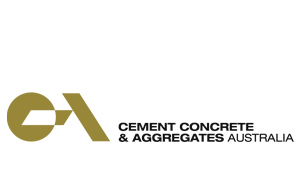Delamination of Concrete Industrial Floors
What is Delamination?
Delamination is the detachment of a thin (up to 5mm) surface layer from the rest of the slab. It is initially manifested by a 'drummy' sound when the pavement is tapped or trafficked.
What Causes Delamination?
The most common cause of delamination is premature trowel finishing of the surface. This should not commence until bleeding (the natural process of water rising to the surface as concrete hardens) has ceased and the concrete has achieved its initial set. When trowelling is done before bleeding ceases, bleed water can be trapped underneath the densified surface layer forming a void under the surface layer which therefore is not bonded to the underlying slab.
Delamination can also occur by surface mortar having been moved during final trowelling to fill 'low spots'. The respositioned mortar simply sits on the underlying concrete rather than bonding to it to form a monolithic slab, and eventually detaches from it.
How can the risk of Delamination be Minimised?
To minimise the risk of delamination:
- Avoid specifying, ordering, requesting or allowing the use of additional admixtures as these will delay final finishing and increase the exposureof the concrete surface to drying from the prevailing weather conditions before it is ready for finishing.
- Ensure that the subbase is dense and saturated and that plastic membranes have no cuts or tears and are correctly lapped and sealed to prevent the escape of moisture from the concrete. If moisture is drawn unevenly from the concrete slab, this will result in uneven bleed or setting that, in turn, can affect the surface finishing.
- Aim to achieve optimum flatness during initial placement and screeding, with less reliance on the final floating and trowelling passes to achieve the required flatness and level, ie avoid having to move mortar over the surface.
- Ensure uniform compaction as bleeding and settlement may increase in less compacted areas. Use vibrating-screeds for vibration up to 150 mm depths, and/or poker vibrators for edges and greater depths. Poker vibrators should be inserted vertically inn a regular pattern (of about 6 times the poker diameter) for a minimum of about 20 seconds.
- Reinforcement should be located at the correct height and supported on chairs at the recommended to be in the range of 50-65 mm. If the cover to reinforcement is less than about 50 mm then vibration of individual bars or strands may compact the concrete immediately above the bar more than elsewhere, resulting in low spots along these lines. These will require filling by an early float pass, thereby risking premature finishing.
- Establish uniform placement pattern so that concrete is always placed against the fresh face and that there are no significant setting-time differences between adjoining loads.
- Ensure that the finishing operation also follows this same pattern.
- An indicator that the concrete is ready for final finishing is the absence of water or water sheen (from bleeding on the surface. Whenever the rate of evaporation of water from the surface is greater than the rate at which the bleed water is rising to the surface, the surface will appear dry. The resulting dry and firm surface can give the impression that the concrete is ready for finishing. In these conditions, the evaporation rate of bleed water should be reduced by the use of fog misting or an evaporation retarder such as aliphatic alcohol. The product should be applied as a fine mist after bullfloating and thereafter as necessary up until final finishing to delay the drying of the surface which causes crusting.
The following good finishing practices should be observed:
- Initial floating should be completed prior to any bleed water appearing on the surface. Excessive bullfloating will increase the risk of delamination.
- Final floating should not commence whilst bleed water is present. Usually a maximum 3 mm deep boot imprint in the concrete surface indicates the correct time to commence floating. If the equipment is 'throwing paste' floating should be delayed until further stiffening of the concrete occurs.
- Sufficient time should be allowed between trowelling passes for the watr that has been squeezed to the surface to evaporate. If blisters or tears form while trowelling, the tilt-angle of blades is too great and flat trowel should be used to immediately push down and rebond the mortar to the concrete.
- Water should not be applied to the surface to aid the movement of finishing equipment or to achieve the filling of minor holes in the surface.
- Equipment should not be 'parked' on the surface.
Article courtesy of Cement Concrete & Aggregates Australia website - www.ccaa.com.au

